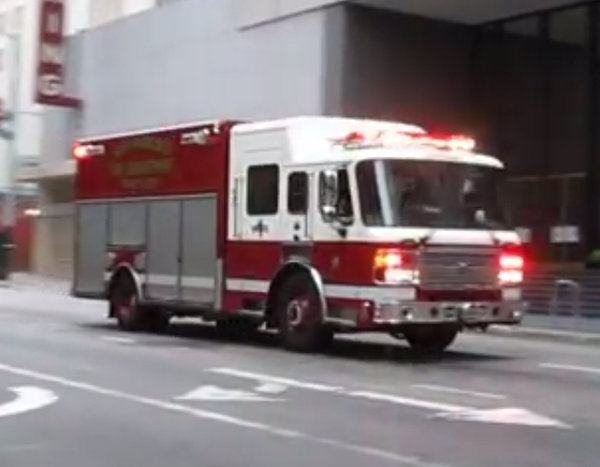The San Francisco Fire Department has not let up in its fight against narrower roads in the city, protesting measures like bulb-outs and traffic lane removals that make streets safer. In one of the latest instances, SFFD has fought 20-foot-wide streets planned for two major redevelopments, going against years of planning and established city codes. The department wants all new streets to be at least 26 feet wide.
Supervisor Scott Wiener today proposed measures to take on SFFD's irrational stance. "Elected policymakers and the voters have repeatedly adopted a policy of safer streets through effective street design, yet some of our departments are acting as if those directives didn't exist," he said in a statement.
Wiener's proposed legislation would require city departments to get Board of Supervisors approval if they want to "deviate" from street width standards in the Fire, Public Works, and Administrative Codes, and the Better Streets Plan. The proposal also asks the City Attorney to draft amendments to those codes to "clarify" the existing standards.
The legislation would also request a report from the city's Budget and Legislative Analyst on the feasibility of using trucks that are smaller and more flexible than many of SFFD's "large suburban-sized trucks," according to a press release from Wiener's office. SFFD already uses such trucks in Bernal Heights and Telegraph Hill, and the report would look at best practices in other cities.
Wiener also requested a hearing to shed light on the SFFD's push for wider streets in the Hunters Point and Candlestick Point re-development sites in the southeast area of the city, "including why the departments injected this change so late in the process and despite approval by the Board of Supervisors of a narrower width," the press release says.

This isn't the first time SFFD has ignored mandates to allow narrower roads approved by supervisors. Last September, SFFD unsuccessfully attempted to reverse Fire Code changes that allowed wider sidewalks by reducing minimum road widths to 12 feet. In December, SFFD officials issued a statement dismissing pedestrian safety advocates as "special interest groups."
Wiener's press release included statements of support from Livable City, Walk SF, and Marcia Dale-LeWinter, a 15-year member of the Mayor's Hunters Point Shipyard Community Advisory Committee, who said SFFD's push for wider streets in that area "disregards 20 or so years of project planning and devoted citizen involvement."
"The issue of street design involved lengthy discussions, with traffic engineers, fire officials, public works experts, city planners and street designers, all weighing in and coming to an agreement in 2010," said Dale-LeWinter.
Noting that "wider streets encourage faster speeds," Walk SF Executive Director Nicole Schneider said it's crucial to "ensure that all streets are designed and engineered for safety from the beginning" if the city is to achieve its Vision Zero safety goal.
"Wider, faster, suburban-style roads erode safety and community cohesion," said Livable City Executive Director Tom Radulovich. "Narrower roadways consume less land, less energy, and fewer resources, and make more room for sidewalks, trees, and green space. The big developments in Eastern San Francisco will create miles of new streets. We have an opportunity to get these streets right, and create convivial neighborhood streets like those in beloved older neighborhoods. Requiring twenty-six foot wide lanes is not getting it right."
The legislation is expected to head to a supervisors' committee for approval in the coming weeks.






